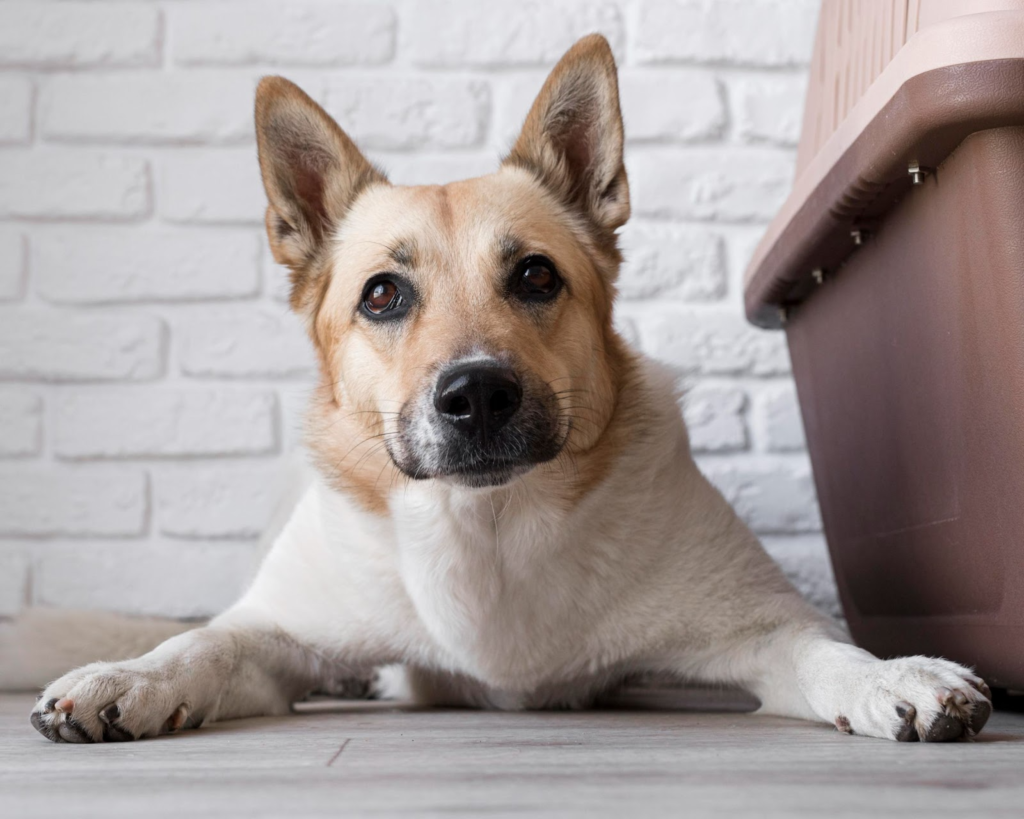Crate Training an Old Dog: What You Need to Know

Crate training is a behavioral management technique that can help improve the behavior of dogs by providing them with a safe and comfortable space of their own. We talk dive into why crate training an old dog is important, when to start it, and provide tips for successfully crate training an older dog.
Why dog Crate Training is Important
Crate training is an essential part of owning a dog. It provides numerous benefits for both the owner and the dog.
- It helps to establish boundaries and create a safe space for your furry friend. Dogs have natural instincts to seek out dens, so providing them with a crate can give them a sense of security.
- Crate training can prevent destructive behaviors in dogs while you’re away from home. Dogs who are left alone without proper confinement may become bored or anxious and engage in unwanted behavior such as chewing on furniture or barking excessively.
- Crates are incredibly helpful when traveling with your pet. They provide a familiar space that your dog can feel comfortable in even when they’re far from home.
- Crates aid in housebreaking by teaching dogs how to control their bladder and bowels properly. With consistent use of the crate during potty breaks, dogs quickly learn where they should go to do their business.
When to Start Crate Training for dogs
When it comes to crate training, timing is everything. You don’t want to start too early or too late. So, when should you start crate training your older dog?
It’s important to understand that there isn’t one specific age where every dog should begin crate training. Every dog is unique and may have different needs and behaviors that affect the timeline of their crate training.

However, as a general rule of thumb, most dogs can start crate training around 3-6 months old. This is usually when puppies are able to control their bladder for longer periods of time and have developed better bladder control during naps or overnight.
But what if you’re dealing with an older dog who hasn’t been trained yet? Is it too late? The answer is no! It’s never too late to begin introducing your adult furry friend to a new routine like this.
Keep in mind that while the process may take longer than starting with a young puppy, many adult dogs still respond well to positive reinforcement methods used in crate training.
It’s also essential not only to be patient but also consistent with the process especially since older dogs might already have habits established over time.
Additionally, always consider consulting with professional trainers as they can provide expert advice on how best fit your pooch into a suitable schedule for successful results
Tips for Successfully Crate Training an Older Dog
Crate training can be a little more challenging with an older dog, but it is definitely not impossible. Here are some tips to help make the process smoother:
Start Slowly:
The key to successfully crate training an older dog is starting slowly. Begin by introducing your dog to the crate and allowing them to explore it on their own terms.
Make It Comfortable:
Ensure that the crate is comfortable by adding soft bedding and familiar toys inside. This will make it feel like a safe haven for your dog.
Use Positive Reinforcement:
Reward your dog with treats or praise when they enter and exit the crate willingly or remain calm inside.
Gradually Increase Time Spent in Crate:
Once your dog feels comfortable being in the crate, gradually increase the time they spend inside while you’re at home, then move onto leaving them in there alone for short periods of time before increasing duration.
Never Punish Your Dog:
Never use the crate as punishment because this will create negative associations for your pet making it harder to get them into it willingly later on.
By following these tips, you’ll be able to successful train even an older canine companion!
Crate training can be a beneficial process for both owners and older dogs. It provides a safe and comfortable space for your dog while also helping with housebreaking and reducing anxiety.
It’s important to remember that every dog is unique and may require different approaches during the crate training process. Patience, consistency, positive reinforcement, and plenty of love are key factors in successfully crate training an older dog.
If you loved this article, you will also love reading our eBook Dubai Ruff Guide
For more furry destinations, the latest blogs, events, and providers you can stay updated by following us on Instagram and signing up for our newsletters.
